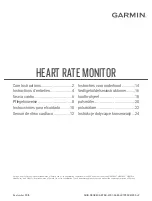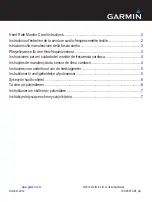
Section 1:
Introduction
1.1 How to Use this Manual
This manual explains the installation, maintenance, and troubleshooting of a
Daktronics Galaxy
®
AF-3010 monochrome LED display. For questions regarding the
safety, installation, operation, or service of this system, please refer to the telephone
numbers listed on the cover page of this manual.
The manual is divided into seven sections: Introduction, Mechanical Installation,
Electrical Installation, Maintenance and Troubleshooting, Appendix A, Appendix B,
and Appendix C.
·
Introduction
covers the basic information needed to make the most of the
rest of this manual. Take time to read the entire introduction as it defines
terms and explains concepts used throughout the manual.
·
Mechanical Installation
provides general guidance on sign mounting.
·
Electrical Installation
gives general guidance on terminating power and
signal cable at the sign.
·
Maintenance and Troubleshooting
addresses such things as removing
basic sign components, troubleshooting the sign, performing general
maintenance, and exchanging sign components.
·
Appendix A
offers general information about the optional temperature
sensor.
·
Appendix B
contains general information about the signal converters.
·
Appendix C
includes the drawings referenced in this manual.
Daktronics identifies manuals by an ED number located on the cover page of each
manual. For example, this manual would be referred to as
ED-10972
.
Listed below are a number of drawing types commonly used by Daktronics, along
with the information that each is likely to provide. This manual might not contain all
these drawings.
·
System Riser Diagrams:
Overall system layout from control computer to
sign, power, and phase requirements.
·
Shop Drawings:
Fan locations, mounting information, power and signal
entrance points, and access method (front and rear).
·
Schematics:
Power and signal wiring for various components.
·
Component Placement Diagrams:
Locations of critical internal sign
components, such as power supply assemblies, controller boards,
thermostats, and light detectors.
Introduction
1-1










































